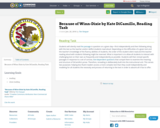
Because of Winn-Dixie by Kate DiCamillo, Reading Task
- Subject:
- Arts and Humanities
- Material Type:
- Homework/Assignment
- Date Added:
- 11/11/2012

Because of Winn-Dixie by Kate DiCamillo, Reading Task

Because of Winn-Dixie by Kate DiCamillo, Vocabulary Task
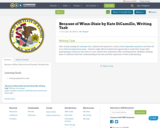
Because of Winn-Dixie by Kate DiCamillo, Writing Task
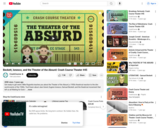
Get ready to get weird. Mike Rugnetta teaches you about the Theater of the Absurd, a 1950s theatrical reaction to the dire world events of the 1940s. You'll learn about Jean Genet, Eugene Ionesco, Samuel Beckett, and the theatrical movement that left us all Waiting for Godot.
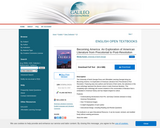
The University of North Georgia Press and Affordable Learning Georgia bring you Becoming America: An Exploration of American Literature from Precolonial to Post-Revolution. Featuring sixty-nine authors and full texts of their works, the selections in this open anthology represent the diverse voices in early American literature. This completely-open anthology will connect students to the conversation of literature that is embedded in American history and has helped shaped its culture.
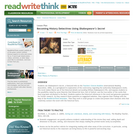
Is the case closed on the authorship of Shakespeare's plays? Student history detectives explore the evidence for and against one of the possible alternatives, Edward deVere, using the novel Shakespeare's Secret plus a variety of online sources.

Becoming Human is an interactive documentary experience that tells the story of human origins. Multimedia, research and scholarship are presented to promote greater understanding of the course of human evolution. This site includes classroom materials, subject-designed exercises, games and activities to help make connections between the concepts that are presented and student learning. PDF versions of the resources may be downloaded from the site.
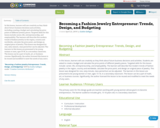
In this lesson, learners will use creativity as they think about future business decisions and activities, including creating a budget and calculating the price points of different jewelry pieces. Targeted skills for this lesson include career, life, entrepreneurship, and employability. The learners will describe five modern trends of fashion jewelry in the region, country and worldwide, calculate the price point, and design an original piece of jewelry. This lesson was designed for one, sixty-minute, class period but can be adjusted. The learners in this lesson are presumed to be young women or men, ages 15-18, in a secondary classroom. The lesson can be a part of math, art, or business courses. Significantly, the author licensed this lesson to be reused and modified to meet the needs of any users.
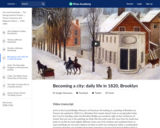
Francis Guy, Winter Scene in Brooklyn, 1820, oil on canvas, 147.3 x 260.2 cm (Crystal Bridges Museum of American Art). Speakers: Dr. Margaret C. Conrads, Director of Curatorial Affairs, Crystal Bridges Museum of American Art, and Dr. Beth Harris, Smarthistory. Created by Beth Harris and Steven Zucker. Find learning related resources here: https://smarthistory.org/seeing-america-2/

"Becoming an Expert: Learn how to Adopt & Adapt Interpersonal Speaking Activities for Your World Language Classroom"
Facilitated by Pathways Project Co-Directors, Kelly Arispe and Amber Hoye, with additional help from Cyndi Cook, Shannon Smith, and Sharon Westbrook.
Description:
On August 5, 2022, the Pathways Project facilitated a one-day virtual professional development workshop for world language teachers in the state of Idaho and across the globe.
In this recording, we invite you participate in this hands-on workshop, where you’ll get to practice locating, editing, and creating Open Educational Resources in the Pathways Project. These activities integrate authentic resources and support performance based teaching in interpretive and interpersonal communication.
Chapters
- Introduction: 0:00
- Part One: An Introduction to Open Educational Resources (OER) 18:01
- Part Two: The Pathways Project: Finding Interpersonal Speaking Activities 40:27
- Part Three: Customizing Your Activity: How to Adapt Activities for Your Classroom 1:09:00
- Part Four: The Digital Humanities and Authentic Resources 1:36:26
Presentation Slide-deck: https://docs.google.com/presentation/...
Website: http://www.boisestate.edu/Pathwayspro...
Subscribe to our newsletter, the Pathways Post: http://eepurl.com/gIXq0X
Connect with the Pathways Project on Social Media:
- Instagram: https://www.instagram.com/boisestatep...
- LinkedIN: https://www.linkedin.com/groups/9178362/
- Twitter: https://twitter.com/PathwaysBSU
Becoming an Expert: Learn how to Adopt & Adapt Interpersonal Speaking Activities by The Pathways Project is licensed under a Creative Commons Attribution-NonCommercial-ShareAlike 4.0 International License.
http://creativecommons.org/licenses/b...
Acknowledgement
The Pathways Project is grateful to provide this professional development opportunity thanks to a recently awarded National Endowment for the Humanities Digital Humanities Advancement Grant.
About the National Endowment for the Humanities
Created in 1965 as an independent federal agency, the National Endowment for the Humanities supports research and learning in history, literature, philosophy, and other areas of the humanities by funding selected, peer-reviewed proposals from around the nation. Additional information about the National Endowment for the Humanities and its grant programs is available at: http://www.neh.gov

In order to practice conducting, you need an orchestra! Learn about what it takes to become an orchestra conductor in this video from Treasures of New York: Juilliard. At Juilliard, the world-famous performing arts school located in New York City, students have the opportunity to work with musicians to hone their conducting skills.

Becoming the Next Bill Nye is about using video production techniques to develop your ability to engagingly convey your passions for science, technology, engineering, and / or math. You’ll have the opportunity to script and on-screen host 5-minute YouTube science, technology, engineering, and / or math-related shows to inspire youth to consider a future in science.
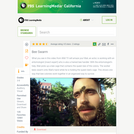
Learn about bees, their habitat and how to interact with a swarm in this Wild TV video segment.
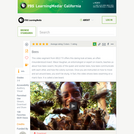
In this video segment from WILD TV, learn about bees and the different techniques for handling them.

This course surveys Romantic musical genres including song, choral music, opera, piano sonata, character cycle, concerto, symphony, and symphonic poem, including the composers Beethoven, Schubert, Berlioz, Chopin, Brahms, Wagner, Verdi, Tchaikovsky, and Mahler. Written essays and oral presentations are based on live performances as well as listening and reading assignments.
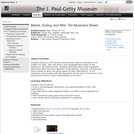
Students discuss a 17th-century painting that depicts musicians in the middle of a fight. They will write a one-paragraph description of the painting in the present tense. Students speculate about what happened before and after the scene depicted in the painting, and then use past and future tenses to write narratives based on their speculations. In the narratives, each student will add descriptive idioms about characters in the painting and draw a visual representation of an idiom.
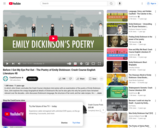
In which John Green concludes the Crash Course Literature mini-series with an examination of the poetry of Emily Dickinson. Sure, John explores the creepy biographical details of Dickinson's life, but he also gets into why her poems have remained relevant over the decades. John discusses Dickinson's language, the structure of her work, and her cake recipes. He also talks about Dickinson's famously eccentric punctuation, which again ends up relating to her cake recipes. Also, Dickinson's coconut cake recipe is included. Also, here are links to some of the poems discussed in the video:
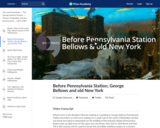
The awesome beauty of the hole dug for Pennsylvania Station. George Bellows, Pennsylvania Station Excavation, c. 1907–08, oil on canvas, 79.2 x 97.1 cm (Brooklyn Museum), a Seeing America video Speakers: Dr. Margarita Karasoulas, Assistant Curator, American Art, Brooklyn Museum and Dr. Steven Zucker. Created by Smarthistory. Find learning related resources here: https://smarthistory.org/seeing-america-2/
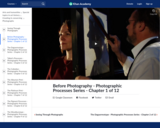
From the ancient discovery of the camera obscura to the 18th century mechanical devices used to create silhouettes such as the physionotrace, this initial chapter explores the inventions and inventors that preceded photography. It recreates the experiments of Johann Schulze who proved the light sensitivity of certain silver salts and Thomas Wedgwood’s early attempts to make photographic images. These early pioneers contributed to the discovery of photography in 1839. This project is made possible by a grant from the U.S. Institute of Museum and Library Services, grant number MA-10-13-0194.
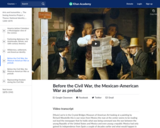
Before the Civil War, the Mexican-American War as prelude. Richard Caton Woodville, War News from Mexico, 1848, oil on canvas, 68.6 × 63.5 cm (Crystal Bridges Museum of American Art, Bentonville, Arkansas). Speakers: Dr. Mindy Besaw, curator, Crystal Bridges Museum of American Art, and Dr. Steven Zucker. Created by Beth Harris and Steven Zucker. Find learning related resources here: https://smarthistory.org/seeing-america-2/